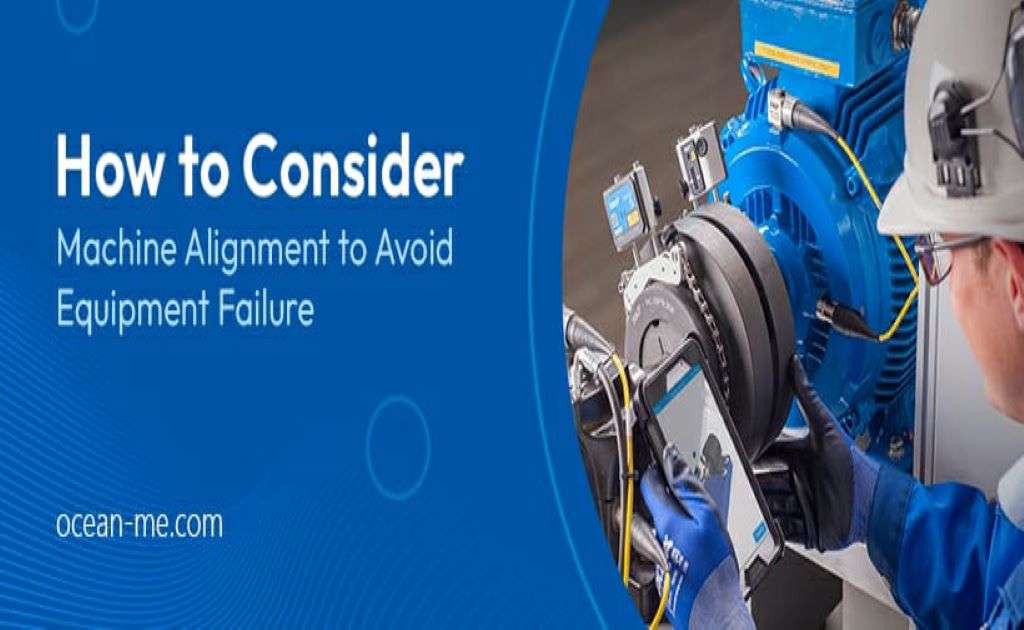Machine alignment may play a significant role in a preventative maintenance strategy if followed correctly. Numerous issues, including coupling damage, early bearing failure, seal failure, increased load consumption, etc., can result from misalignment. Let’s explore alternatives to these problems.
How to Spot Machine Misalignment?
The machine is considered to be in good alignment when both coupling hubs are correctly aligned in the radial and axial planes. Parallel misalignment occurs when the shafts are not parallel, but it can also happen when a shaft is angled incorrectly. An angular misalignment occurs when the shafts are arranged at an angle more than acceptable limits from one another, whereas a parallel misalignment involves offset shafts. Both kinds of misalignments could take place sometimes.
Vertical or horizontal parallel misalignments are also possible. The machine feet have shims that may be added or removed to fix vertical misalignment. To correct horizontal misalignment, the motor must be shifted from side to side with jacking bolts until the centre lines are in place. Additionally, angular misalignment must be fixed by moving vertically or horizontally.
You may also like to read:
- What Is Reliability Centered Maintenance? A Simple Guide
- Frequent Causes Of Piping Vibration And Their Repercussions On Piping Systems
- Ultrasonic Flow Measurement Services
Repercussions of Misalignment
Machines can suffer serious issues from misalignment. The most typical issues are as follows:
- Coupling damage: When couplings are pulled apart for internal examination, the grids are damaged, necessitating the replacement of the entire coupling. This serves as a hint as to what the true issue is.
- This leads to more wear, more friction along the bearing surfaces, and an early breakdown of the machine.
- Leaks can happen when a process damages a seal, and if you don’t fix it, the shaft could also be damaged.
- When a part breaks, replacing it is not just an option. To keep machine failures at bay, it’s important to find and fix the misalignment.
Unfortunately, the majority of technicians tend to blame other problems rather than consider that misalignment might lead to failure. They must get enough training so they can understand the risks of misaligned shafts and learn how to align shafts correctly.
Predictive Technologies to Avoid Equipment Failures
Vibration Analysis
Vibration analysis aids in the detection of misalignment by comparing variations in machine stability, vibration response, and critical speeds to a baseline.
Thermography
Temperatures rise due to misaligned friction; a technician can spot aberrant heat zones by creating a heat map of the bearing areas. A temperature rise is not necessarily a sign of harm while a machine is being inspected. The technician must constantly do spot checks and compare the readings.
Oil Analysis
Oil analysis can aid in the detection of misalignment by evaluating the overall condition of the machinery, oil, and impurities. It can identify active machine damage earlier than vibration analysis if done correctly. It is also important to know how the machine bearings are made. Without this information, it would be hard to make a clear connection between misalignment and the problem.
Laser Shaft Alignment
By focusing a laser onto a separate sensor, this technique aids in the precise and simple alignment of shafts. This sensor sends information to a device, which then figures out the exact data that helps control the machine.
In a live alignment, the technician positions the shafts as accurately as possible, turns on the machine alignment and lets it run until the temperature is right for operation. The alignment values will then be re-measured right away after turning the machine off to gauge the expansion.
Tiny increases in iron, lead, copper, aluminium and other common bearing components may be detected during elemental analysis testing. This data can be the first sign that there is a machine alignment issue.
When vibration analysis is combined with oil analysis, the best results will be found. This will help find problems early and find out why they are happening.
Final Reflections
Your machine’s operational lifespan may be increased with proper alignment. Ocean Technical and Mechanical Services have skilled workers who can use cutting-edge tools to quickly and accurately align things in the right way.
We can keep your machinery in good working order and keep you away from paying for expensive repairs, as we are experts in preventive maintenance techniques and have the latest tools and skilled workers.



